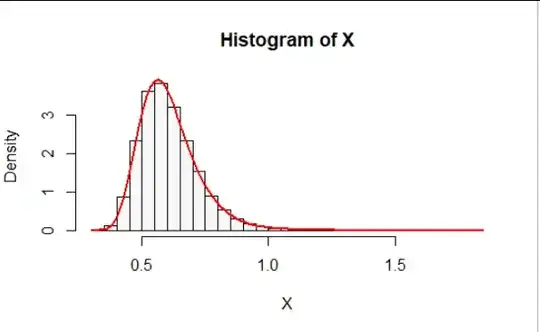Let $Z$ have a Gamma$(n,1)$ distribution, which has density
$$f_Z(z) = \frac{1}{\Gamma(n)}\, z^{n-1} \,e^{-z}\,\mathrm{d}z.$$
Let $\lambda \gt 0.$ Then
$$X = \sqrt{\lambda}Z^{-1/2}$$
ranges from $0$ to $\infty$ and
$$Z = \frac{\lambda}{X^2}.$$
Substituting $z = \lambda x^{-2}$ and (therefore) $|\mathrm{d}z| = 2\lambda x^{-3}\mathrm{d}x$ we find
$$f_X(x)\mathrm{d}x = \frac{1}{\Gamma(n)} (\lambda x^{-2})^{n-1}\,e^{-\lambda/x^2}\,2\lambda x^{-3}\mathrm{d} x = \frac{2\lambda^{n}}{\Gamma(n)}\, x^{-2n-1}\,e^{-\lambda/x^2}\,\mathrm{d}x.$$
Set $\lambda = \sqrt{n/\beta}$ or $\lambda=\sqrt{n\beta}$ depending on whether $\beta$ is a scale or rate parameter, respectively.
This is a Generalized Inverse Gamma distribution.
To find the moments of $X$ it's simpler to ignore all this. Let $k$ be the moment ($k=1$ for the expectation, etc.) and observe
$$E(X^k) = E\left(\lambda^{k/2} Z^{-k/2}\right) = \lambda^{k/2} \frac{1}{\Gamma(n)}\int_0^\infty z^{-k/2}\,z^{n-1}\,e^{-z}\,\mathrm{d}z = \lambda^{k/2}\frac{\Gamma(n-k/2)}{\Gamma(n)}.$$

Here is a histogram for $10^5$ realizations of $Z$ with $n=8,$ $\beta=1/3$ (the rate). On it I have superimposed the theoretical distribution, which is in close agreement. The following R code reports the mean and variance of this sample and the theoretical values; they, too, agree closely.
n <- 8
beta <- 1/3
n.sim <- 1e5
Z <- rgamma(n.sim, n, beta)
X <- sqrt(n)/sqrt(Z)
hist(X, freq=FALSE, breaks=50, col="#f8f8f8")
curve(dgamma(n/x^2, n, beta) * 2*n/x^3, xname="x", add=TRUE, col="Red", lwd=2)
c(Mean=mean(X), Formula=sqrt(n*beta) * exp(lgamma(n-1/2) - lgamma(n)))
c(mu2=mean(X^2), Formula=n*beta / (n-1))
c(Variance=var(X), Formula=n*beta*(1/(n-1) - exp(2*(lgamma(n-1/2) - lgamma(n)))))
